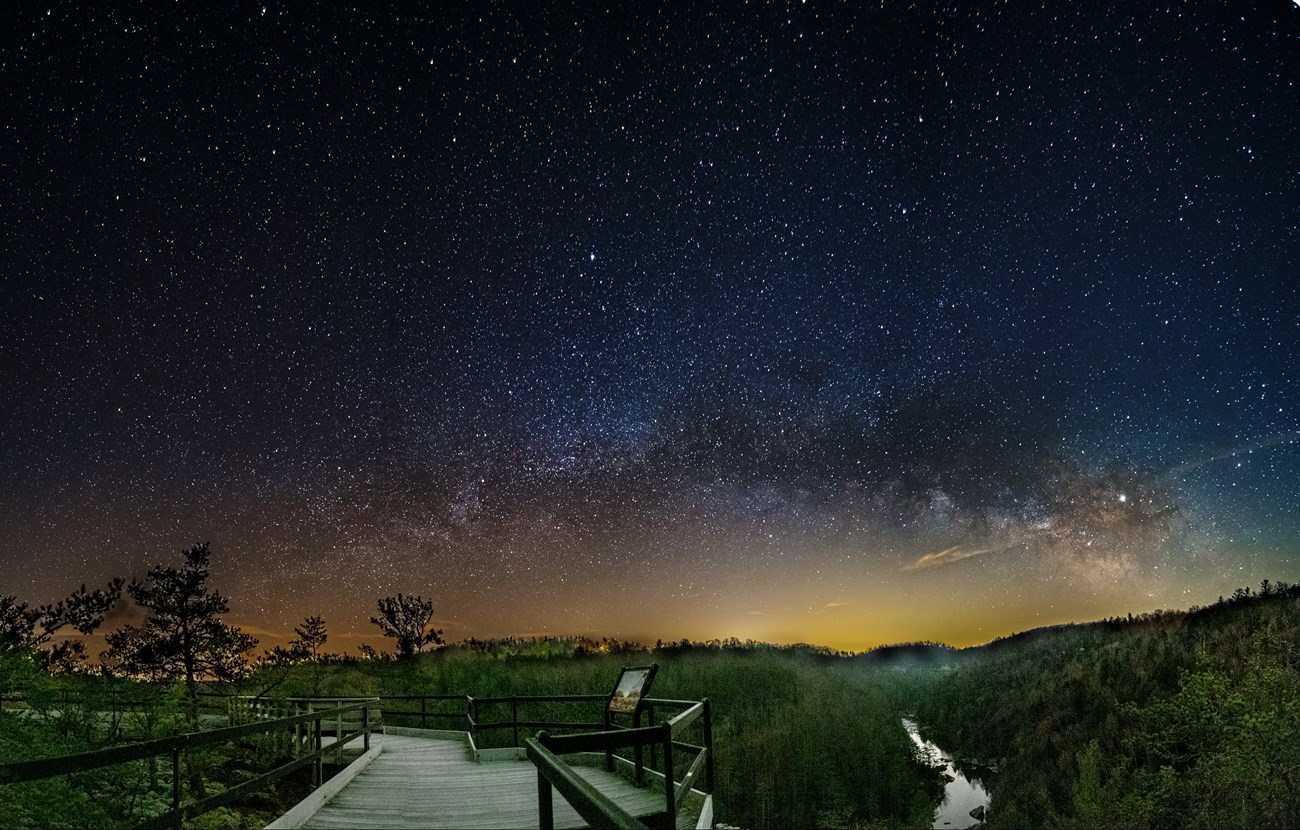Last updated: January 25, 2023
Article
Obed Wild and Scenic River - Where Half the Park is After Dark
Content submitted by: Niki Stephanie Nicholas, Superintendent, Big Fork NRRA/Obed WSR

NPS
“I’ve made many trips to visit our national parks, spending countless nights camping under the stars. Late one night as I emerged from the tent and looked upward, the stars were so numerous, so bright, and seemed so close that I felt like I could just reach up and pick them from the sky!”
— A recent Obed Wild and Scenic River Visitor.
For many visitors, seeing the Milky Way from Lilly Bluff Overlook in the Obed Wild and Scenic River is a first-time experience. The wispy trails of stars seem to create a river in the sky. As visitors gaze upwards, they are surrounded by the sounds of a wild and scenic river flowing on its timeless journey through the natural amphitheater created by the river gorge. These opportunities to enjoy nature serve to connect us with our world. And at night, the connection extends to our universe, as visitors gaze at the same constellations enjoyed by our ancestors.
Obed Wild and Scenic River was designated as an International Dark Sky Park by the International Dark Sky Association (IDA) in 2017. Starry night skies are an important part of the special places protected by the National Park Service. Our national parks hold some of the last remaining harbors of darkness. They provide amazing opportunities to experience this critical resource. The Obed is one of these special places with a truly dark night sky. One of the Obed's primary interpretive goals is to reconnect life and nature. Interpretive programs discuss the value of quiet, solitude, and darkness in the noisy, frenetic, and developed world of the 21st century.
To qualify as an International Dark Sky Park, Obed demonstrated exceptional dark-sky conditions and a strong commitment to preserving the night sky. Since 2013, the park has offered year-round astronomy and dark sky interpretive programs. These programs are made possible by a strong collaboration with local amateur astronomers from the ORION Astronomy Club in Oak Ridge, Tennessee and the Knoxville Observers in Knoxville, Tennessee.
The Obed park staff began working with the International Dark Sky Program on certification efforts years ago. Efforts included collecting data, offering Night Sky Junior Ranger programming, and ensuring that all park activities considered night sky as a valuable natural resource.
“Just as it is important for people to be able to hike, rock climb, fish, paddle and so many other activities in this beautiful place, it is essential that the wonders of the night sky be available for all to experience,” said Superintendent Niki Stephanie Nicholas.
The quality of the night sky (its relative darkness) throughout the United States, and the world for that matter, has come under siege. The widespread and rapid rate of development and the associated installation of lights is lighting the night sky worldwide. Lighting associated with advertising, building and street illumination, and grounds security all contribute to “light pollution.”
One estimate indicates that about 30 percent of all light generated in the United States is wasted; costing billions of dollars. Outdoor lights provide many benefits, but considering their impacts on the night sky is necessary. Dark sky-friendly lighting can help reduce light pollution and energy waste.
Light pollution interfers with our ability to see the night sky. It also negatively affects wildlife. Some bird species depend on stars for navigation. Light pollution interferes with their travels. Some believe that declines in moth populations are linked to attraction to lights and subsequent death.
The Obed provides national park visitors the opportunity to experience a view of the night sky that is increasingly becoming more and more rare in our modern world.
Wild and Scenic River Currents
This article was featured in the 2023 edition of Wild and Scenic River Currents, the annual newsletter for the National Park Service Wild and Scenic Rivers Program.
